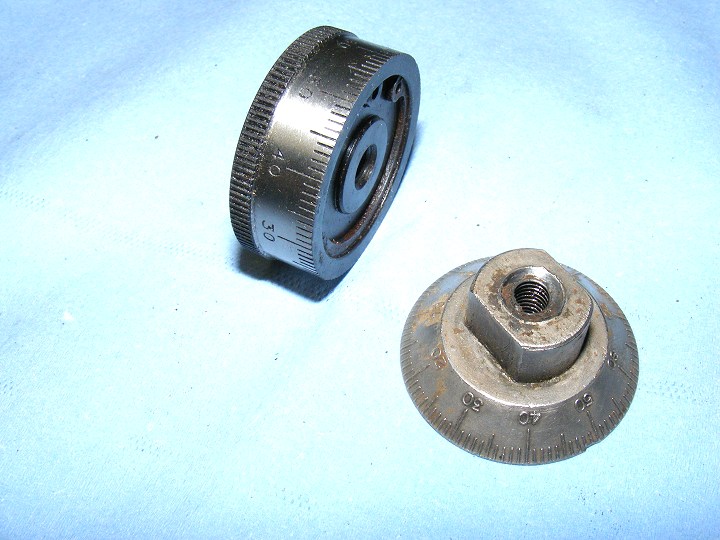Saddle Re-Grind, Scraping, & Fitting
I'd mentioned earlier that I had some work to do the saddle, so here's another picture to explain why. Reminds me of a ploughed field.

Myford offer a saddle re-grind and refit service in conjunction with their bed grinding service, but at a cost of some £200-£300. I had considered having this done when I had the bed re-ground, but having been given a few clues from an article about the Myford re-furbishment process - link to scanned page here: Myford Re-Grind - and having a perfectly useful if small Surface Grinder I decided that this was something that I could very easily do myself and save a considerable sum. The photograph in the lower right corner of the scanned page shows how Myford do it, and my way which was shamelessly cribbed from theirs will be shown below.
The first stage was obviously to make a fixture to hold the saddle and fit on my Surface Grinder. The workshop already had a milling machine as well, so this was not a problem. I had a flat 'fixture plate' previously machined with a series of tapped holes and surface ground that I had made up for another job, so the plan was to adapt this to clamp the saddle on. Stage 1 was therefore to make some dovetail clamps to replicate the Myford fixture.
I used 2 pieces of 50mm x 10mm gauge plate and milled the angles on these, then set them up on the surface grinder to finish machine the dovetail faces, then offered them up to the saddle dovetails to check the fit with a bit of toolmakers blue.
Turned out perfect.
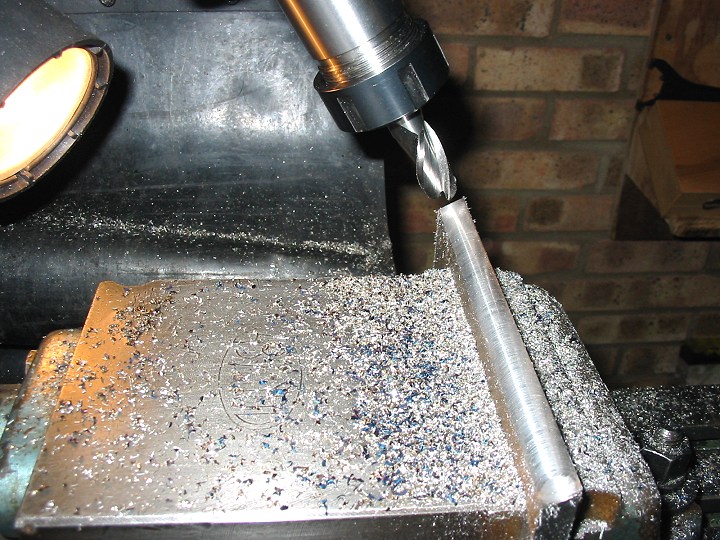
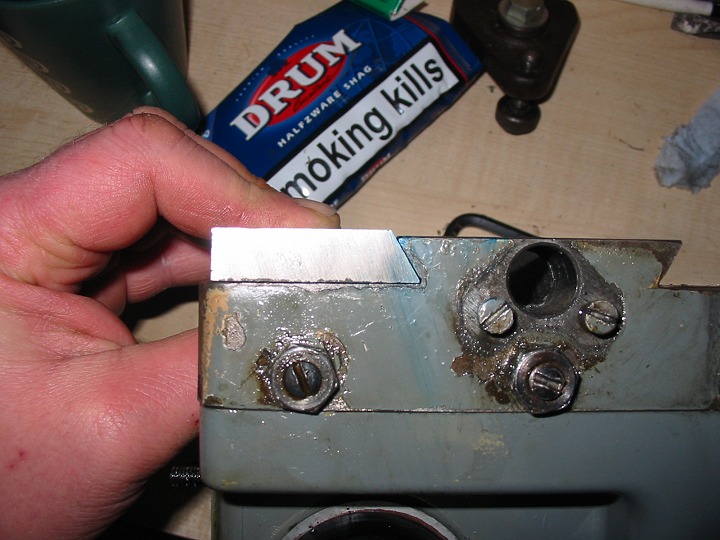
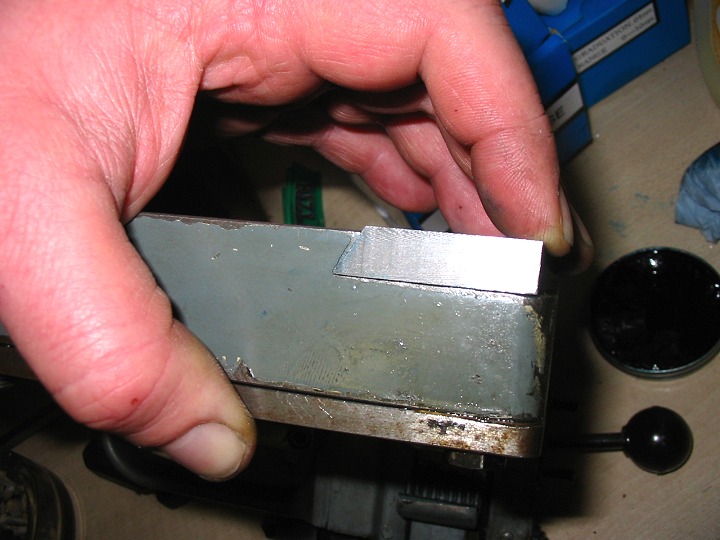
The next stage was to drill and countersink some holes to accept 8mm countersunk socket screws, and to match up with those already on the fixture plate, and slot one set of holes so that it could move. The plan was to have one of the dovetail clamps fixed and the other one floating, with 'pusher pins' on a jack screw to move it inwards and lock the saddle in place once it had been slid onto the fixture.
Here you can the the first stage completed with the fixed dovetail clamp on the right, and the slotted floating dovetail clamp on the left. I hadn't countersunk the holes on the R/H side quite deep enough, and the bolt heads fouled on the saddle, so the fixture was popped on the grinder and the heads taken down flush with the top.
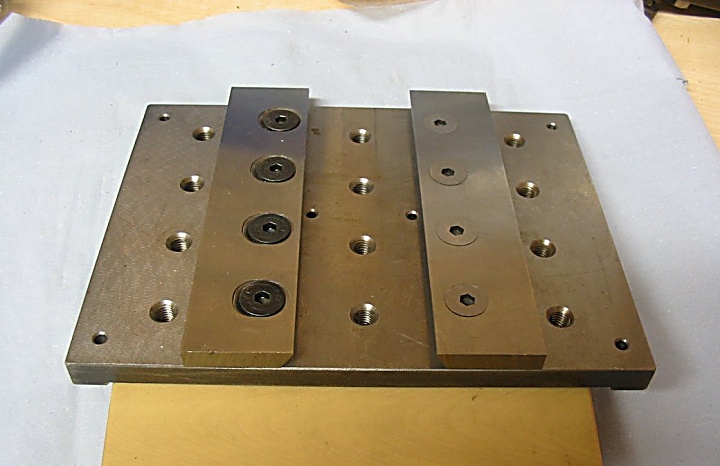
Here you can see the saddle offered up for a trial fit on the fixture, the sliding clamp on the left is loose at this point. Below that you can see a picture of the block holding the 'pusher' pins that act on the floating dovetail clamp. The pins are actually hardened and ground ejector pins from a mould tool, cut to length and running in a reamed hole. Behind the pins the holes in the block are tapped for jack screws.
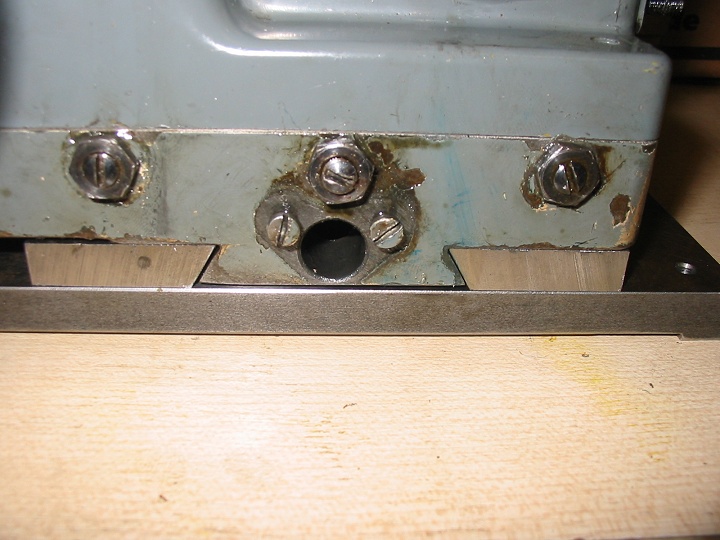
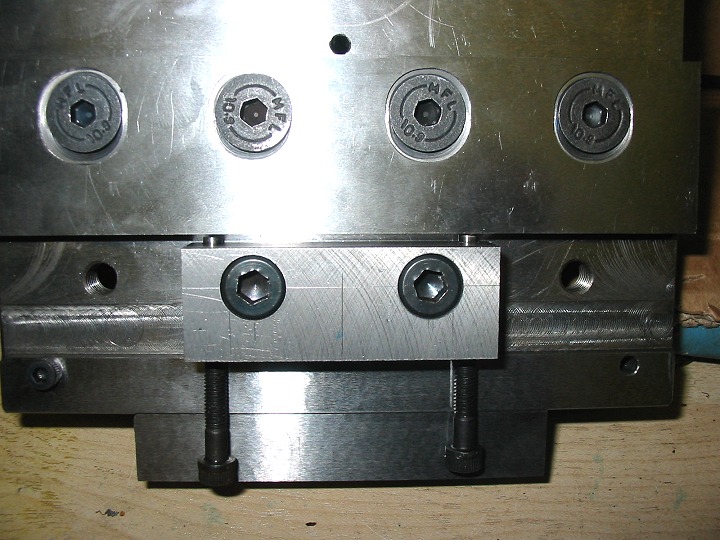
The reason for the floating clamp plate will hopefully now become apparent. My surface grinder has a maximum table movement of 6" on the Y-axis (cross-feed). However, I needed 7" movement to grind the entire saddle in one set-up without demounting and re-mounting it. This was something I wanted to avoid at all costs due the high risks of grinding it with 2 marginally different plane heights, which could occur due to small positional discrepancies from the de-mounting and re-mounting.
Hence the design of the fixture had to accurately hold and position the saddle, but allow it when required to slide in a very linear movement on the Y axis without deviation, for a distance of just over 1". This was accomplished by loosening the jack screws a quarter turn and sliding the saddle along the dovetail clamps.The correct end position was designed to be met when the inner edge of the cutout on the saddle touched on the pusher-pin block.
Hopefully the picture below showing it all mounted will explain that a little bit better!
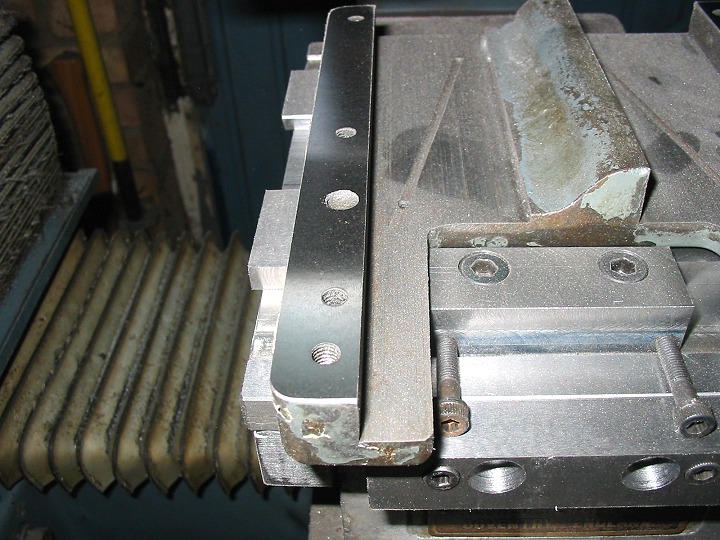
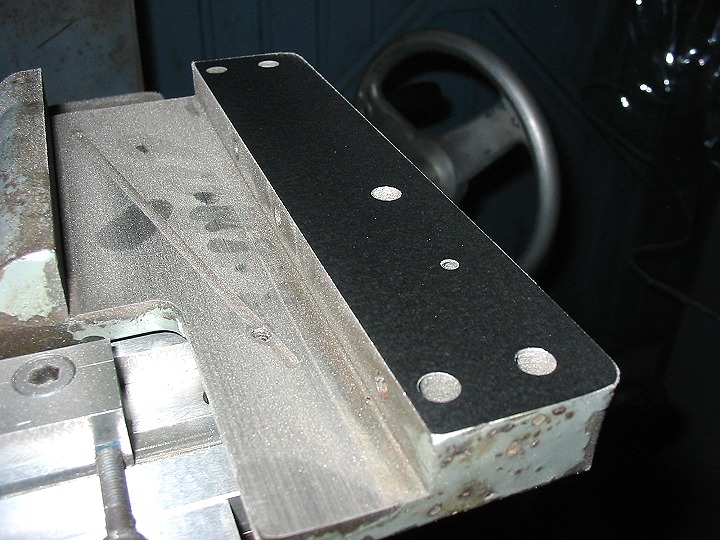
The pictures above show the first test grind. At this point, the grinder was set up to take only a very light cut of 2 tenths of a thou' (0.0002") off the mounting faces for the apron and the rear saddle strip. These areas weren't worn of course, as they have no sliding contact with anything, but would have to be ground back proportionally to the same amount taken off the scored sliding surfaces. If this wasn't done then the saddle guide strip and the saddle traverse pinion gear (in the apron) would be sitting to low on the bed, and would allow the saddle to lift on the back edge, but not allow the pinion to mesh correctly with the rack at the front, so important to get this right.
As such they were perfect for the test, being originally ground flat from the factory, and would allow me to verify the setup. The 2 tenths removed was noted so that this could be subtracted from the final grind depth.
Having verified the setup was OK, that the fixture was working as designed, and everything was square, it was now time to grind the worn surfaces. I don't use coolant on my grinder as I generally grind fairly small items with light cuts, and I can't stand the mess coolant makes. However to try and keep the grind as cool as possible, I used a blue Norton SG (seeded gel) grinding wheel for this job. These are not only capable of grinding very hard materials, but are very friable and more self sharpening than the standard Aluminium Oxide wheels, and as a result cut far cooler with less chance of overheating or 'burning' the work.
The finish ground saddle is shown below. It's often tricky to take good pictures of a ground surface as the reflections from the camera can interfere with this, but I dont think this one came out too bad.
The total amount taken off to get rid of the badly scored surface and get it all nice and flat again was just under 0.005".
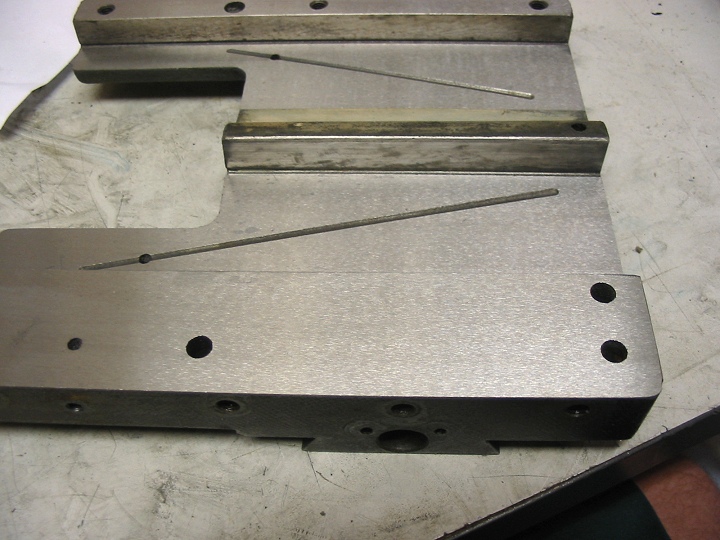
What's not shown, as I did it later on in the process and forgot to take a pic, is that the inner guide surface that runs along the bed shear (the bit sticking up in the middle of the picture) was scraped and stoned to give a very slight 'toe-in' angle. This is so that when the gibs are correctly adjusted the saddle is pointing very-very-very *slightly* skew to the bed, so that the Lathe will face parts slightly concave, so they will sit flat on the end. Myford specify that this should be in the region of 0.001" in 12". I haven't measured mine, but its somewhere pretty close to that.
Finally, here is a another picture of the saddle. I blued up the lathe bed with some toolmakers blue and then popped the bare saddle on to check for contact. Although the poor light in the photograph doesn't show it very well, and the flash alternatively blocks and hides some areas, it has excellent contact over its length.
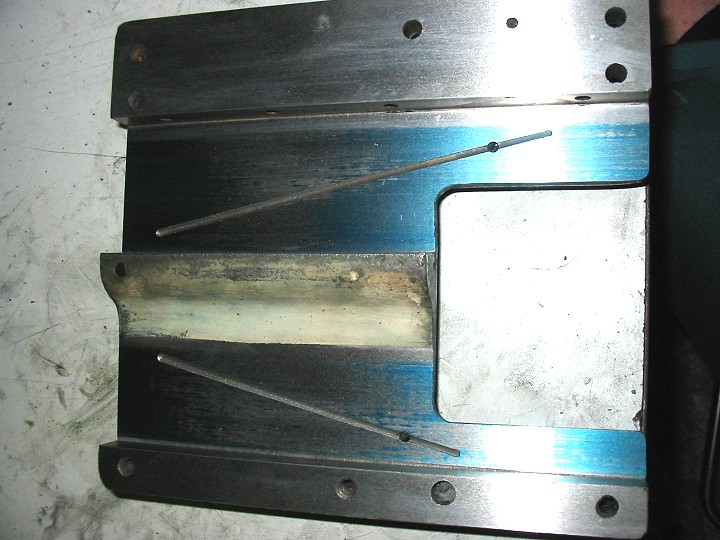
Next up for grinding was the cross-slide. This was fairly good on the sliding surfaces with just some light marking, but nevertheless as I had the grinder it made sense to clean it up a bit. First up was the top surface which was flat but looking a little bit tired, so it was given a light lick over to clean it up, then reversed on the magnetic chuck to hold on the newly ground surface, and 0.002" was taken off the bottom.
Heres the newly ground surface.

With the underside now ground, I took it across to my granite surface plate (an 18" x 18" Crown Windley - bought from TJH for £20 when they closed down in 2006) which I already lightly coated with toolmakers blue, to check for full contact. Even though it was newly ground, the ends were touching and 'blueing out' whilst the centre was not. It was only low in the centre by a few tenths of a thou', so I decided to scrape the surface in to ensure full contact and provide a nice bearing surface. In the following pictures you can see the progress of the scraping, and watch as the contact moves in from the ends and across to the middle of the slide.
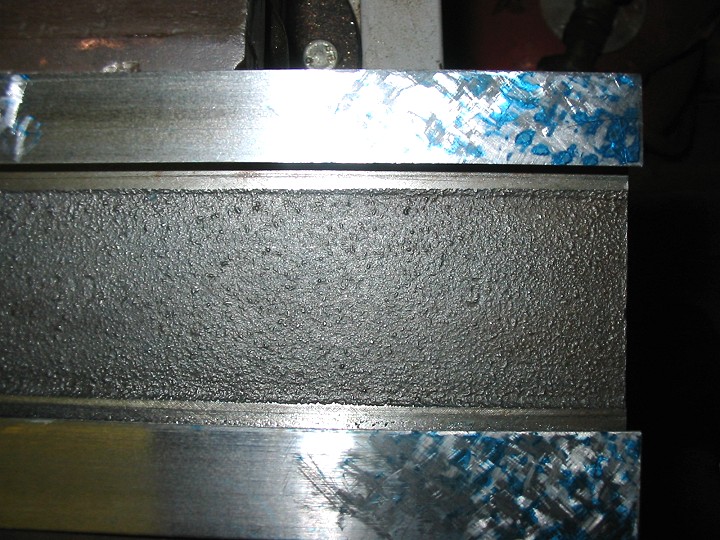
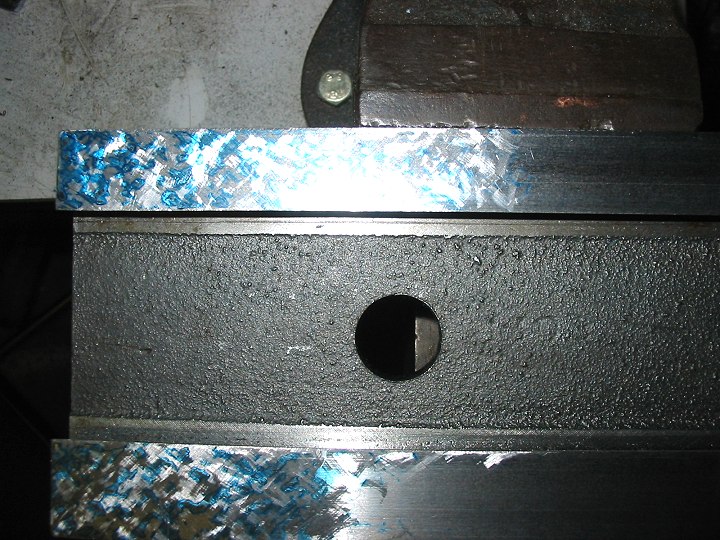
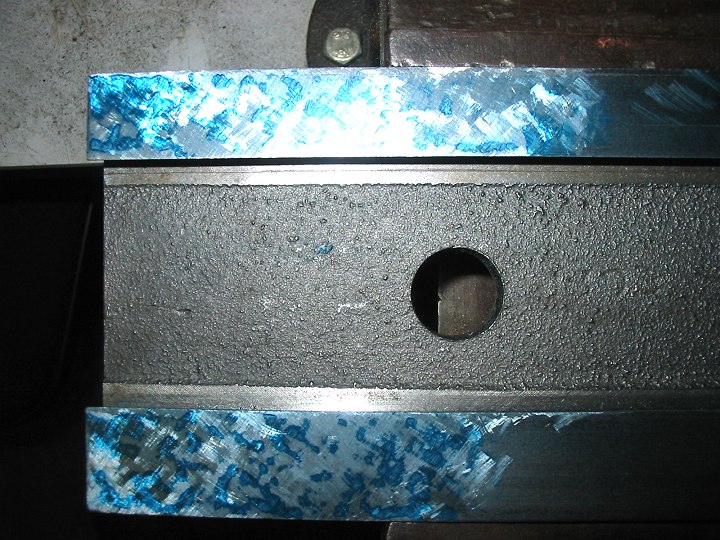
I'm a little bit old fashioned in my scraping habits. I don't use mechanical scrapers like a Biax, or fancy carbide tipped scrapers, but instead I prefer to make them in the time-honoured fashion from a old worn out file. The file teeth are ground off the end, then the end is annealed to be soft, flattened out a bit and shaped, then heated red-hot and quenched to harden it again before grinding and lapping the cutting edge on it. I fnd that scrapers made like this give a nice controlled little 'shave' on the metal, and I prefer to use them like this. They do need more honing than carbide to keep the edge sharper though, but I think it's worth it. Heres my favourite one resting on a tin of Stuarts 'Micrometer' toolmakers blue.
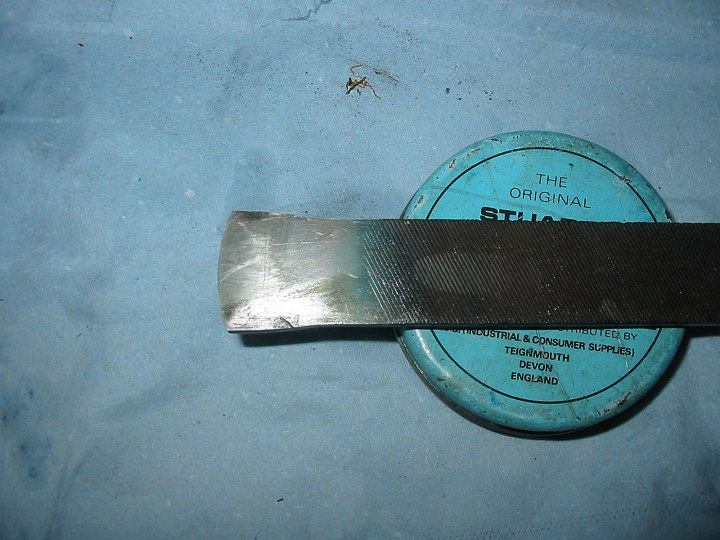
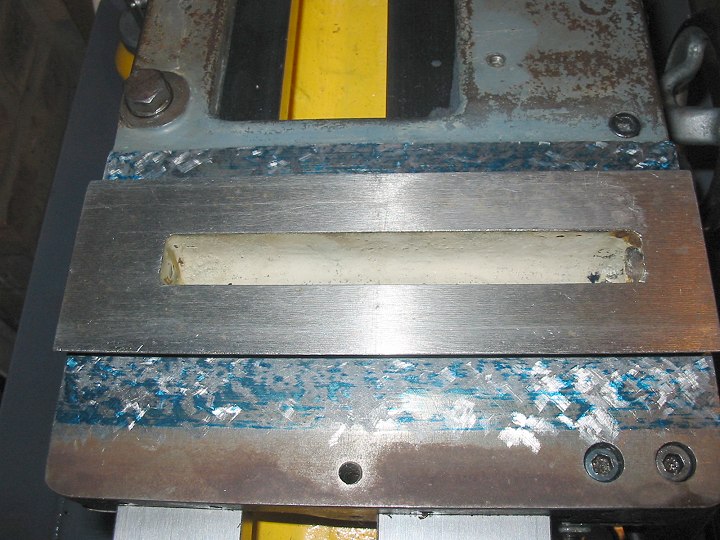
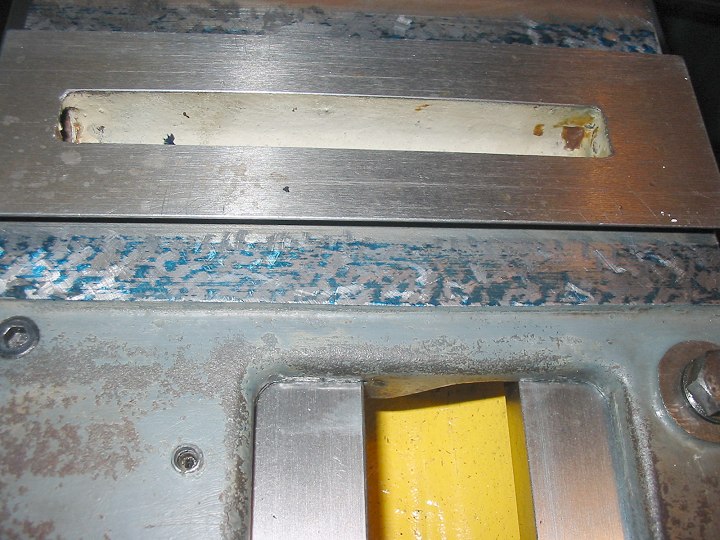
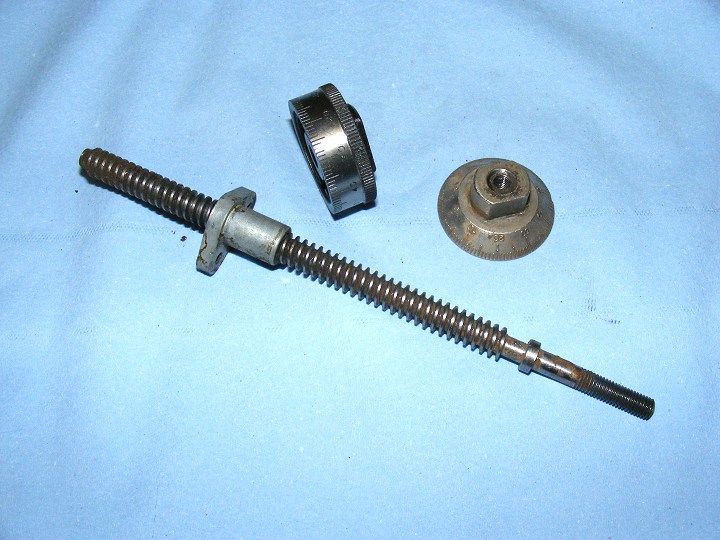
As you can see from the following two pictures, the Acme thread on the end of the screw still carries a nice square form, whilst the section in the middle was worn to a more 'peaked' form which increases the backlash.
New leadscrews and nuts were bought direct from Myford to replace these.
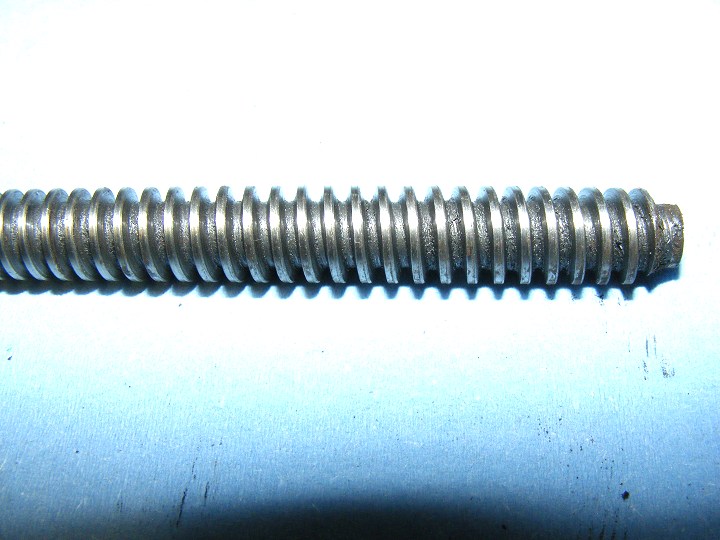
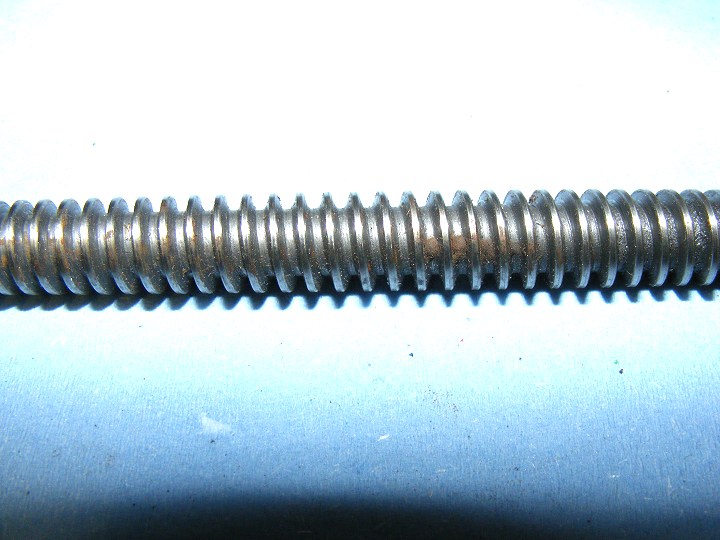
And finally, here is a shot of the new micrometer adjustable (re-settable) dials from Myford, which replaced the 'orrible old cast Mazak items. They are tensioned by an internal leaf spring that provides a smoothly damped feel, and it's a real blessing to be able to 'zero' the dials before winding on a cut, rather than struggling to read the old dial numbers and then do the maths.
